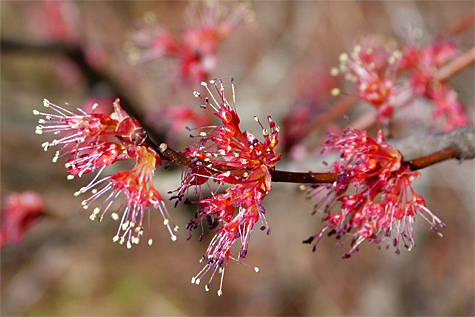
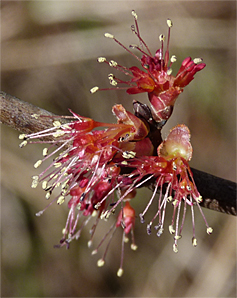
At least two Red Maples here at the Museum are in bloom. The trees are located in Explore the Wild on the north side of the Wetlands. Being out of the wind at the bottom of a former quarry, and on the north side of that quarry where they get direct sun the year-round, it’s typically warmer where these trees grow. In my opinion, they’re slightly ahead of schedule. But according to the North Carolina State Beekeepers Association the trees are at the very beginning of their normal blooming period.
Red Maples are early bloomers no matter where they grow which is one reason that they’re a personal favorite of mine, they brighten up the otherwise gray and brown winter landscape with their red buds and blooms.
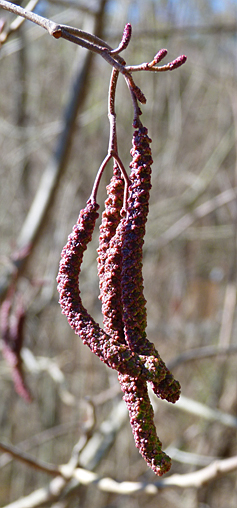
Another woody plant that’s in bloom a tad ahead of itself is Hazel Alder. We have three here at the Museum, all are located just west of the maples mentioned above. Alders are shrubs or small trees and can grow to 20 feet or more. Ours are much smaller, probably because they’re out competed for sunlight by the many Black Willows growing all around them. Alders are a wetland species.
Both male and female flowers are present at the same time and are located at the tips of the branches, the males in the form of catkins dangling just below the reddish female flowers. The catkins put out abundant amounts of pollen which is carried by the wind to the female flowers.
All three of our alders are in various stages of readiness for the “breeding” season.
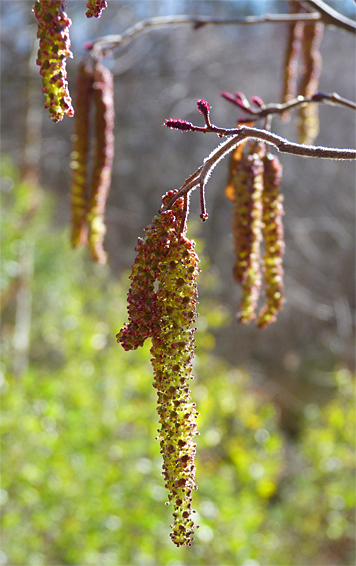
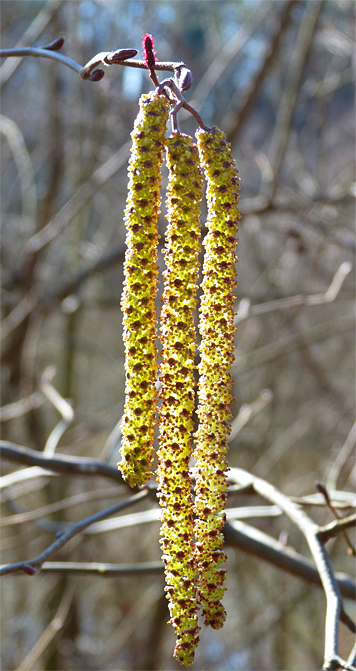
If you suddenly find yourself sneezing during the month of February here in the Piedmont and are near a wetland, you may be allergic to alder pollen.
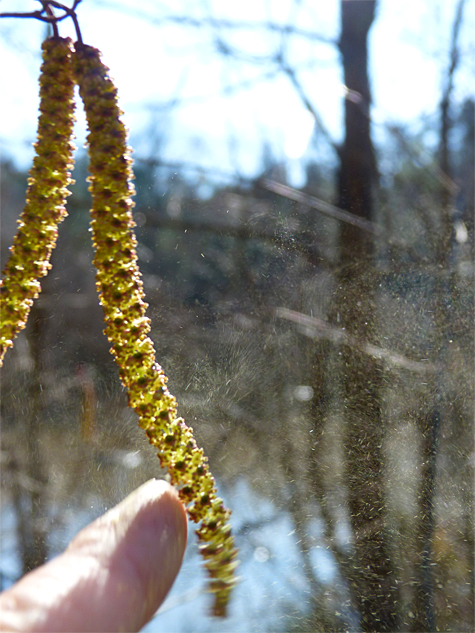
And you thought you were safe from allergies during winter.